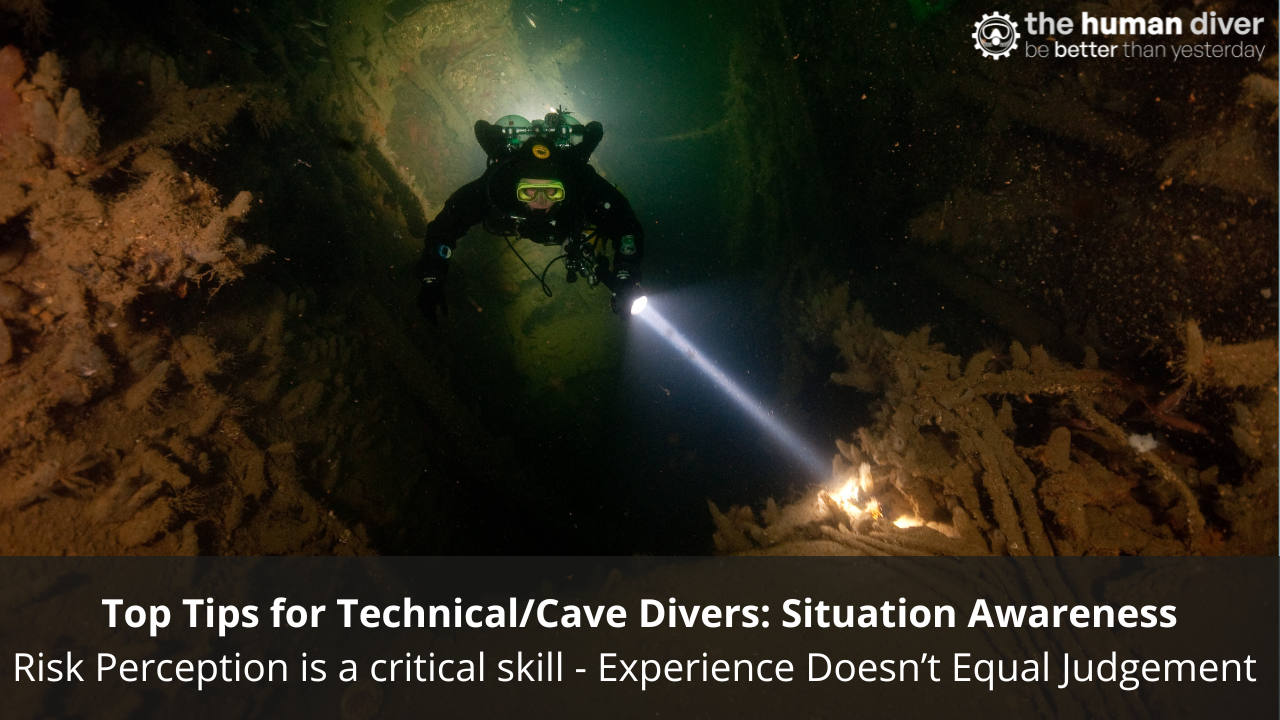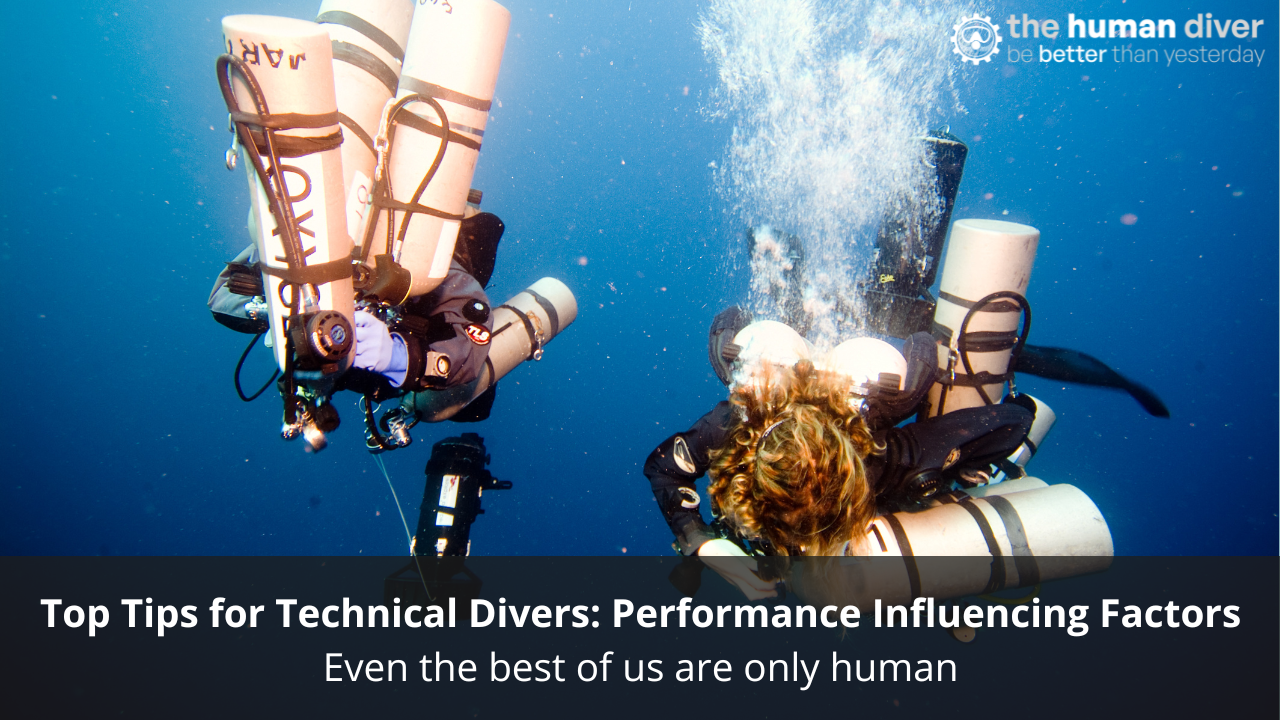
The Lost Fin: A Lesson in Situation Awareness
Jan 14, 2025While preparing for one of my Human Factors in Diving classes, I had a conversation with a friend, a diving instructor, about decision-making underwater. We discussed how situation awareness—or the lack of it—affects divers' choices. He shared a story about a training dive that perfectly illustrated this point.
It was a clear midday in the quarry, the kind of day where the sunlight cut through the water, turning everything a vibrant shade of blue. The golden dolomite walls reflected the light, creating an almost surreal underwater glow. Visibility wasn’t bad—about eight meters horizontally—but the group of students and their instructor had learned to navigate the environment carefully, staying close and communicating effectively.
This was their fourth open-water dive, and everything was going smoothly. The group hovered at six meters above a suspended platform, finishing their final training exercise. The water was calm, and the divers had settled into a rhythm, moving as a cohesive unit. From their vantage point, the quarry’s bottom was clearly visible, a silty floor twelve meters below.
After completing the exercise, the team moved toward the wall for their safety stop. The steel ladder bolted firmly to the wall and waited for them to ascend one by one. The instructor watched as each diver approached the ladder, signalled their buddy, and began their climb.
But then, one of the students—new to diving and still mastering buoyancy—began to struggle. Hovering near the ladder, he kicked hard to adjust his position, trying to steady himself. In the effort, one of his fins slipped off. It happened so quickly that it seemed surreal—the fin slowly spiralled downward, its bright colour contrasting with the dim quarry bottom.
The diver froze for a moment, staring at his lost fin as it descended. Then, without hesitation, he turned toward his instructor, locking eyes for a brief second. The message was clear: I’m going after it.

Before the instructor could signal back, the diver kicked off with his remaining fin, propelling himself downward in pursuit. The group watched as he moved deeper and deeper, his form awkward and uneven without the stability of both fins.
The instructor hesitated, torn between two priorities. He needed to ensure the other students safely reached the surface, but he also couldn’t leave the lone diver to struggle at depth. Quickly, he signalled the remaining divers to continue their ascent and waited until they were securely on the ladder. Then, he turned and followed the single-finned diver into the blue.
The scene at the bottom was chaotic. The diver, now surrounded by a cloud of stirred-up silt, was fumbling to reattach the fin. The more he tried, the worse the visibility became, his movements frantic on the silty bottom.
The instructor arrived, taking control of the situation. He motioned for the diver to stop and assisted in securing the fin. Once the task was complete, he checked the diver’s air supply, gave a reassuring signal, and guided him back toward the surface.
The dive ended without further incident, but the events lingered in the instructor’s mind. Something about the moment—the diver’s impulsive decision, the frantic descent—felt like a missed opportunity for deeper understanding. Why had the student reacted instinctively, disregarding the safety protocols he’d been taught? And what could the instructor have done differently to prevent it?

Fixation vs. Awareness
When I asked my friend if he had debriefed the incident, his response revealed a deeper issue.
“Yes, we talked about why chasing the fin was unsafe,” he said.
“But did you ask how it made sense to him at the time?” I pressed.
He paused. “No... I was focused on explaining why his decision was wrong.”
The student had been task-fixated and focused on recovering his fin, forgetting safety considerations like depth, air supply, and communication. Meanwhile, the instructor had been equally fixated—on correcting the student’s behaviour rather than understanding the reasoning behind it.
The Cost of Task Fixation
Task fixation isn’t unique to new divers; it’s a cognitive trap that affects everyone. The student’s fixation on his fin blinded him to the broader risks of his decision. Similarly, the instructor’s fixation on correcting the mistake prevented him from understanding how it made sense for the student to do what he did: how the thought of retrieving the fin was worth the risk. And did he consider any risks involved?
This mutual fixation highlights a common challenge in diving: balancing immediate tasks with situation awareness. For the student, the lost fin felt like a pressing issue. For the instructor, ensuring the student understood the danger seemed paramount.
Moving Beyond Fixation
This story underscores the importance of structured debriefing and reflection. A good debrief isn’t just about pointing out mistakes—it’s about understanding the "how it made sense" behind them. The DEBrIEF model, encourages instructors to explore decision-making processes and uncover the behaviours that drive actions, even when those actions might seem illogical in hindsight.
For the student, losing the fin triggered a narrow focus that overshadowed critical considerations. For the instructor, the goal of "correcting" overrode the need to understand the student’s perspective.

Building Better Situation Awareness
To improve situation awareness, divers and instructors alike need to learn to recognize task fixation and step back. It is not easy. Especially once we are drawn down the rabbit hole. This is where the team comes in. Outside observers, can help to bring us back and above. Look from a different perspective. Briefings should address common stressors, like losing equipment, and emphasize decision-making strategies. Good debriefs will go beyond technical actions, fostering open dialogue about how actions made sense at the moment, what behaviours were good and how we recognise that. So we can replicate that in the future. What we would like to correct in the future, and how we will do that.
By focusing on understanding rather than simply correcting, instructors can help students build the mental models needed to anticipate and mitigate similar situations. And by encouraging honest, reflective conversations, we create a culture of learning that benefits everyone.
Final Thoughts
The story of the lost fin isn’t just about a diver’s mistake—it’s a lesson in the pitfalls of task fixation for both students and instructors. By taking the time to dig deeper and understand the "how it made sense" behind decisions, we can move from simple technical skills correction and foster true situation awareness, based on reflection and team support. After all, diving is as much about learning from each other as it is about exploring the underwater world.

Andrzej is a technical diving and closed-circuit rebreather diving instructor. He works as a safety and performance consultant in the diving industry. With a background in psychology specializing in social psychology and safety psychology, his main interests in these fields are related to human performance in extreme environments and building high-performance teams. Andrzej completed postgraduate studies in underwater archaeology and gained experience as a diving safety officer (DSO) responsible for diving safety in scientific projects. Since 2023, he has been an instructor in Human Factors and leads the Polish branch of The Human Factors. You can find more about him at www.podcisnieniem.com.pl
Want to learn more about this article or have questions? Contact us.










